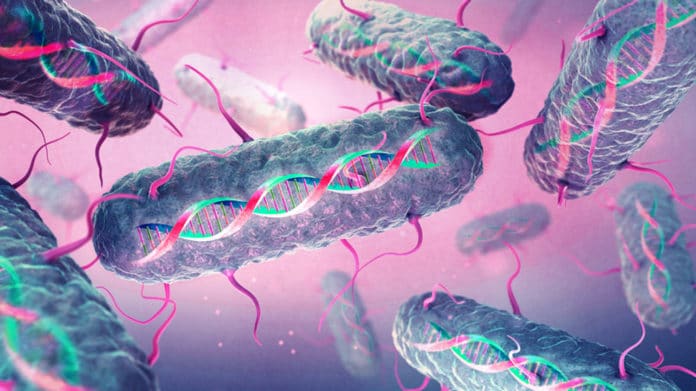MIT’s biological engineers have recently introduced HiSCRIBE, a new DNA writing technique that can efficiently edit bacterial genomes. Unlike previously developed systems for editing DNA in bacteria, this new technique allows to specifically edit, activate, or silence genes in certain species of bacteria. What’s more, it could be used to store memory of cellular interactions or spatial location.
According to scientists, this new technique can permanently store several spatial and temporal information for generations. The same information can then be retrieved by sequencing the cells’ DNA.
As the technique doesn’t need any form of selection, scientists can perform genome editing and DNA writing outside of laboratory settings within complex bacterial ecosystems.
Scientists boosted the efficiency of genome writing in bacteria by eliminating some of E. coli’s defense mechanisms against single-stranded DNA. They started with disabling enzymes called exonucleases. This breaks down single-stranded DNA. They also knocked out genes involved in a system called mismatch repair, which normally prevents the integration of single-stranded DNA into the genome.
These modifications enabled scientists to achieve near-universal incorporation of the genetic changes. This created an unparalleled and efficient way of editing bacterial genomes without the need for selection.
Fahim Farzadfard, a former MIT postdoc and the lead author of the paper, said, “Because of that improvement, we were able to make some applications that we were not able to do with the previous generation of SCRIBE or with other DNA writing technologies.”
Unlike the previously developed SCRIBE technique that records the duration and intensity of exposure to a specific molecule, this new HiSCRIBE system can trace those kinds of exposures as well as additional types of events, such as interactions between cells.
For example, scientists showed that they could track a process called bacterial conjugation, where bacteria exchange pieces of DNA. By integrating a DNA ‘barcode’ into each cell’s genome, which can then be exchanged with other cells, scientists can determine which cells have interacted with each other by sequencing their DNA to see which barcodes they carry.
Farzadfard said, “This kind of mapping could help researchers study how bacteria communicate with each other within aggregates such as biofilms. If a similar approach could be deployed in mammalian cells, it could someday be used to map interactions between other cells such as neurons. Viruses that can cross neural synapses could be programmed to carry DNA barcodes that researchers could use to trace connections between neurons, offering a new way to help map the brain‘s connectome.”
“We are using DNA as the mechanism to record spatial information about the interaction of bacterial cells, and maybe in the future, neurons that have been tagged.”
Scientists noted, “This kind of species-selective editing could offer a novel way to make antibiotic-resistant bacteria more susceptible to existing drugs by silencing their resistance genes, the researchers say. However, such treatments would likely require several years more years of research to develop.”
Farzadfard said, “This approach could be used for evolutionary engineering of cellular traits, or in experimental evolution studies by allowing you to replay the tape of evolution over and over.”
Journal Reference:
- Timothy Lu et al. Efficient retroelement-mediated DNA writing in bacteria. DOI: 10.1016/j.cels.2021.07.001
